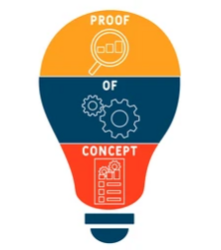
The goal of the MARINA R&D project is to propose innovative approach for optimal ventilation management of tertiary buildings. In this project, CETIC contributes its IoT expertise toward advanced and transparent management of the heterogeneity of the involved sensors and actuators along with their data. Test set-ups are being deployed and they include a variety of components including in particular some innovative Volatile Organic Compound (VOC) sensors. This will ultimately make it possible to offer a personalised innovative facility management service exploiting adapted and relevant sensors and data sources for the specific usage scenarios of each building.
In the MARINA (ModulAR INdoor Air quality management platform towards energy efficient systems and healthy places) project, CETIC provides expertise in the advanced and transparent management of the heterogeneity of the sensors involved and the data they generate (see Figure 1). CETIC is developing an IoT middleware, DMWAY (Dynamic Mapping Gateway), allowing efficient management of IoT data streams from/to heterogeneous data sources, interfaces and protocols. DMWay is a modular, extensible and configurable middleware, based on a flexible architecture leveraging a toolbox of specialised software modules (see Figure 2).
Figure 3 represents the DMWay toolbox’s use for the implementation of the CETIC’s building monitoring demonstrator with, as input, the data sources currently supported and, as output, the connectors to the remote systems currently implemented.
In the MARINA project, the support and integration of air quality data sources is done incrementally through the implementation of Proofs of Concept (PoC). This enriches the interfaces and protocols supported by DMWay. Two PoCs are deployed, with the partners BizzDev and VOCSens.
The objective of this PoC is to evaluate DMWAY in the BizzDev partner’s environment. The PoC is represented in the figure below, it allows the collection of data from connected sockets and multi-sensors deployed in the premises of BizzDev, and from a remote ammonia - NH3 sensor(developed by the VOCSens partner for this example) deployed in CETIC premises. The latter sends the measurements remotely to the BizzDev infrastructure using the RabbitMQ connector. Thus, this PoC illustrates DMWay’s ability to manage various distributed data sources, and to connect effectively and simultaneously to the processing and visualisation services in different locations (Gosselies and Tournai in this example).
The figure below shows the interfaces and connectors instantiated within DMWay release for the implementation of this PoC.
The figure below shows the visualisation dashboards at the two sites.
The objective of this PoC is to implement the specific interface allowing the VOCSens sensor’s proprietary data collection support. This sensor communicates through a serial link. It is connected to a RaspberryPi on which a DMWay instance is deployed. A Mapper is implemented to translate the data received from the sensor in JSON format into an associated data-model representation for it inside DMWay. This work has to be done only once. Hence, the integration of new sensors with the same characteristics is greatly facilitated thereafter since it can leverage the same data modeling henceforth supported :
By the way, this PoC allowed us to develop and validate connectors for the simultaneous transmission of data to two different applications where the collected data collected is explored (see Figure below):
Through these two PoCs, we showed the flexibility potential of DMWay middleware in managing different sensors with heterogeneous data formats. The set-ups were easily and quickly customised thanks to the mechanisms offered by DMWay and allowing to support and update the specific semantics of each data source, whether it comes from an established standard or from a proprietary definition. We also demonstrated the ability of DMWay to transmit the collected data transparently and simultanously to different remote systems.
These promising intiial positive results of the project make it possible to continue towards the development of an optimised service for indoor air quality management in buildings in the tertiary sector.